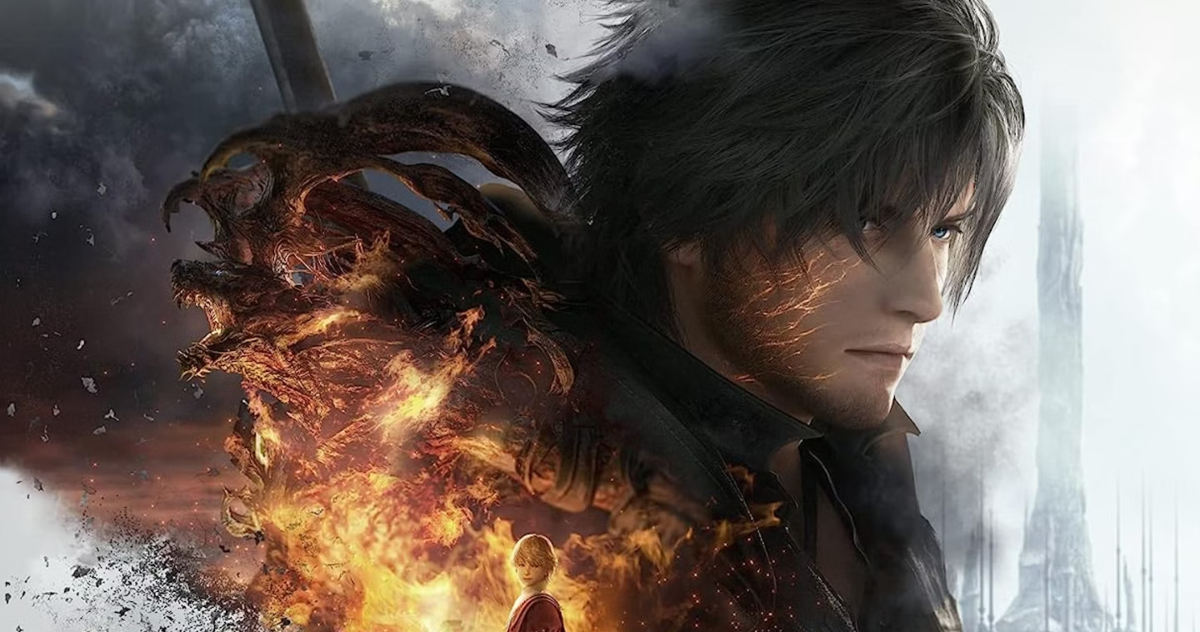Former Square Enix executive Jacob Navok has shared his thoughts on less-than-expected sales of the latest Final Fantasy games. He also tried to explain why people mistakenly think that the Japanese publisher is simply setting unrealistic goals for its products.

Final Fantasy XVI
Shortly after releasing its full-year financial report, Square Enix president Takashi Kiryu told analysts during an earnings call that all of its last three major releases — Final Fantasy XVI, Foamstars, and Final Fantasy VII Rebirth — failed to meet the company’s expectations.
He didn’t disclose or update sales figures for any of those titles, only saying that FFXVI can achieve its goal within 18 months.
These comments reignited a long-running debate that Japanese publisher might set unrealistically high sales targets for its games. However, Jacob Navok, CEO of Genvid Technologies and former director of business development at Square Enix, attempted to debunk these misconceptions in a thread on X.
“This was not true when I was there and is unlikely to be true today,” he said. “Sales expectations generally come from a need to cover the cost of development plus return on investment.”
There’s a misunderstanding that has been repeated for nearly a decade and a half that Square Enix sets arbitrarily high sales requirements then gets upset when its arbitrarily high sales requirements fail to be met.
This was not true when I was there and is unlikely to be true…
— Jacob Navok (@JNavok) May 23, 2024
Navok noted that if a game costs $100 million to make over five years, it has to beat what the company could have returned investing a similar amount in the stock market over the same period. “For the 5 years prior to Feb 2024, the stock market averaged a rate of return of 14.5%. Investing that $100m in the stock market would net you a return of $201m, so this is our ROI baseline,” he explained.
Besides production budgets, there are also marketing costs, platform fees, and other factors such as discounts to take into account.
“Assume marketing expenses at $50m, and assume that you’re not going to get $49 [after 30% platform fees] but rather an average closer to $40 given discounts, returns and other aspects,” Novak noted. “Now let’s say in that first month you sold 3m copies with $40 net received (we will ignore the recoup). You need to surpass $254m to make expectations. (That’s $100m + $101m in ROI baseline + $50m in marketing).”
With 3 million copies of FFXVI sold (the latest figure disclosed by Square Enix), the company would have only made around $120 million according to these rough estimates. In reality, budgets of AAA games like this are likely higher than $100 million, so it is not that Square Enix’s expectations are unrealistic. These titles just don’t sell well enough for the amount of money that go into their production and marketing.
Novak added that the “core of the problem is that the budgets were set in a period where the expectation was that audiences would grow.” Decisions for the rebooted FFVII series were made “within the lens of 2015-2022,” when the games industry was growing rapidly every year (not to mention the huge surge in revenue and player numbers during the pandemic).
In what Novak called the pre-Fortnite era, before the boom of massive cross-platform free-to-play hits, Square Enix and other publishers could just look at its competitors and pick the right release date. It was easier to forecast that the audience had the certain amount of money they could spend on the certain amount of AAA game releases. But now big-budget single-player games also have to compete for players’ time with several major free-to-play live services such as Fortine, Call of Duty: Warzone, etc.
“The Fortnite-ization of the industry was not entirely predictable in 2015 when budgets were being planned,” Novak said. “Even after [Fortnite] came out and well into the Covid period it felt like industry growth was pulling all ships forward, not just a handful. But that isn’t what happened.”
So game companies have several ways to increase the ROI for their products: decrease costs, increase price, or increase audience size. As it is hard for single-player titles to signficiantly icnrease the number of players, Novak believes that publishers will continue to charge more for their games. The new $70 base price already seems too much for many customers, so companies try to come up with tricky monetization methods, including various deluxe editions priced at $100 or even higher.
Novak also cited another, less realistic way: “If publishers can capture more of the platform side revenue, they can moderate price point increases while capturing a better return on investment because they’ll be capturing say $50 or $55 out of $70.”
In the new market environment, it makes less and less sense for publishers to launch their games exclusively on one platform. That’s why Square Enix recently announced its plans to “aggressively pursue a multiplatform strategy” by releasing its AAA titles on PC, PlayStation, Xbox, and Nintendo Switch. Exclusive deals are no longer worth losing sales by locking your game on one console.
